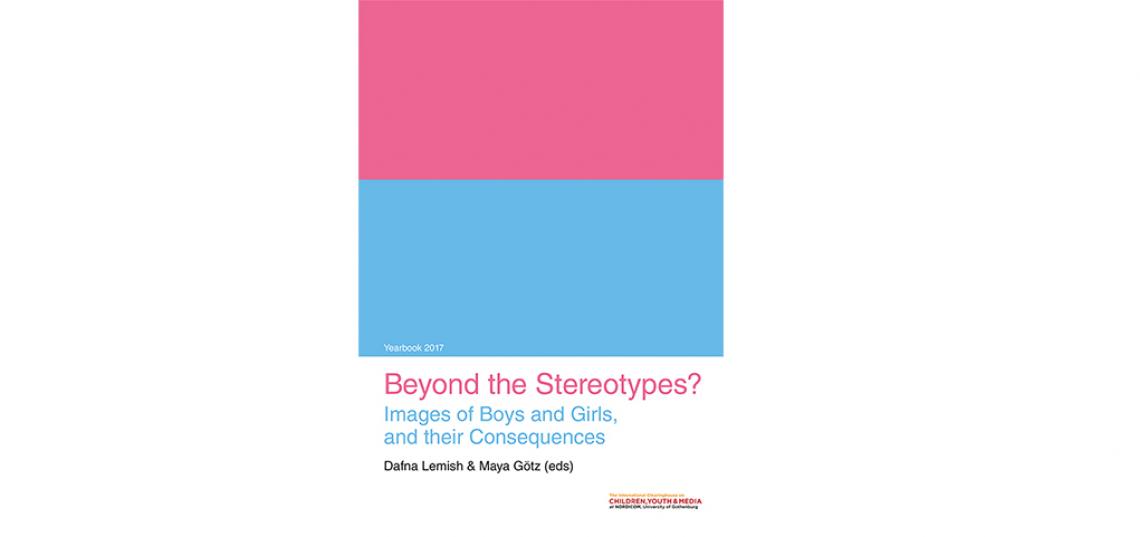
“Boys are better leaders than girls.” “Boys are better at math and science than girls.” “Girls are more emotional than boys.” Children of both genders internalize damaging media messages such as these, starting at a very early age, with life-long consequences for both genders.
However, a new book, co-edited by Associate Dean for Programs and Professor of Journalism and Media Studies Dafna Lemish and her co-editor, Dr. Maya Götz, director of the International Central Institute for Youth and Educational Television (IZI) at the Bayerischer Rundfunk in Munich, Germany, shows that children are just as influenced by positive, progressive role models.
The book, titled “Beyond the Stereotypes? Images of Boys and Girls, and their Consequences,” was published by the Nordic Information Centre for Media and Communication Research (Nordicom), in December 2017, as a Clearinghouse Yearbook of 2017.
“The book shows how it is possible to present positive role models of boys and girls who break stereotypes and can be happy, popular, fulfill their dreams, be better people and live fuller lives of being in touch with their feelings, strengths and weaknesses,” Lemish said. “The media can offer alternative narratives that can empower both boys and girls to explore the entire range of emotions, cognitions and behaviors without being restricted because they happened to be born with one reproductive organ rather than another.”
Asked what the most important messages the book conveys through the collection of the interventions it includes, Lemish said, “I would say there are two main messages: First, that unfortunately, as hard as we tried, we found that innovative interventions are quite rare, but the good news is that children are very receptive to them. It reinforced what we know – children learn from the media content they are exposed to – when they engage with stereotypes they internalize them, but when they engage in progressive role models they learn from them too!”
Lemish and Götz have been collaborating on various research projects for almost 20 years, and they have written four books together (and are working on a fifth), so it wasn’t surprising that Nordicom reached out to them to edit the book. They both used their global networks to contact international scholars in order to secure the submissions of articles describing positive interventions.
“We were invited by Nordicom to edit this book with a very open invitation to deal with gender, children and media– we decided on what we would like the collection of articles to be and how to design and plan the book,” Lemish explained. “We felt that we already know a lot (and also written a lot) about stereotypical gender representations in children’s media, and we wanted to do something more advanced and innovative – to actually highlight positive interventions, as well as conduct research that documents how children are making meaning out of them and are affected by them.”
Lemish said the internalization of gender messages impacts both boys and girls negatively. “They are both vulnerable, as the stereotypes of masculinity and femininity are influencing both of them in negative ways,” said Lemish. “Internalization of stereotypes leads to misplaced attitudes, restrictive aspirations for the future, unhealthy relationships between the genders, eating disorders mostly in females and sexual performance anxiety mostly among males, etc., and a general perpetuation of gender inequality in society.”
How old are children when they begin to be influenced by the ways the media portray gender? “From birth on,” Dafna Lemish said. “We have plenty of evidence that babies are exposed to screens, and they learn from the minute they are born.”
Describing the gender barriers in media, Lemish said, “There are many issues that are structural – basic gender inequalities in society are reflected in the media; the masculine dominance of media decision makers; conservative assumptions about what boys and girls are interested in viewing (the mistaken assumptions that boys will not watch girl leads, while girls will watch everything – boys as well as girls lead characters) , old formulas that are repeated, and so much more. (I wrote about this in a book titled “Screening Gender on Children’s Television: The Views of Producers Around the World.)”
Some of the most glaring gender inequalities in the media that children see, Lemish said, are that “Boys appear twice as often in the media than girls, they are seen more in leading positions, as rational, action oriented, movers and doers, while girls are more in passive, emotional, and private sphere roles, dependent, concerned with their appearance, and sexualized (For more on this topic, see an earlier book written by Lemish and Götz, titled “Sexy Girls, Heros and Funny Losers.”
Lemish and Götz made a few surprising discoveries while compiling the submissions for the book. “We learned how the issues of gender inequalities continue to be so wide spread the world over,” Lemish explained, “but all over the world there are professionals who are committed and eager to make a positive difference.”
The book is open access and available to download here.
